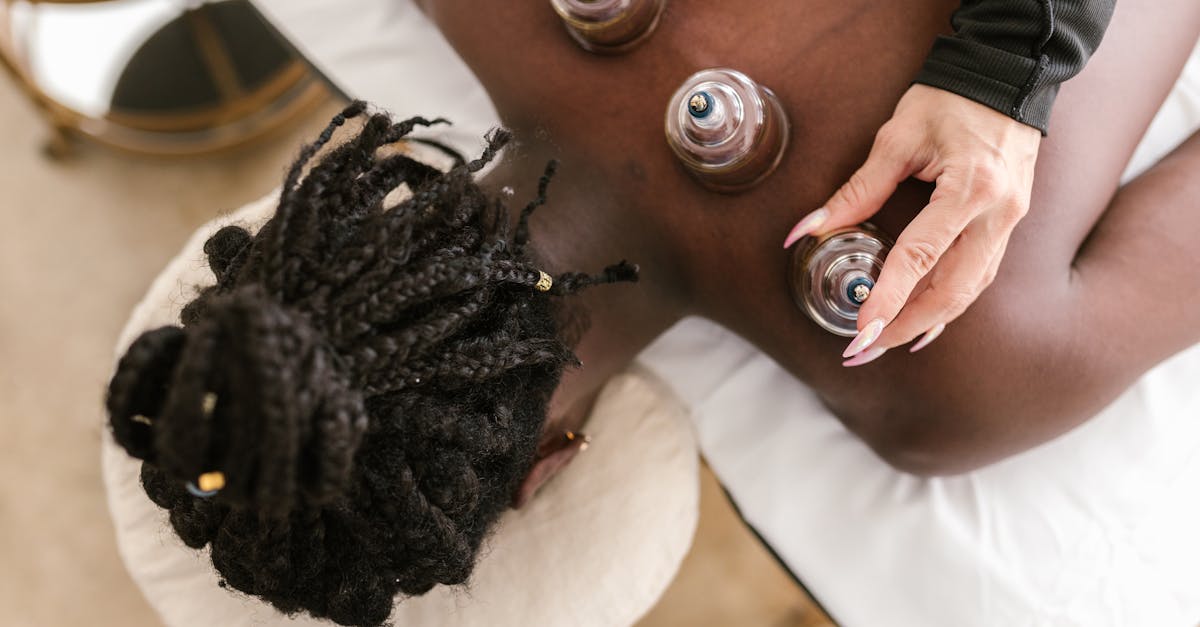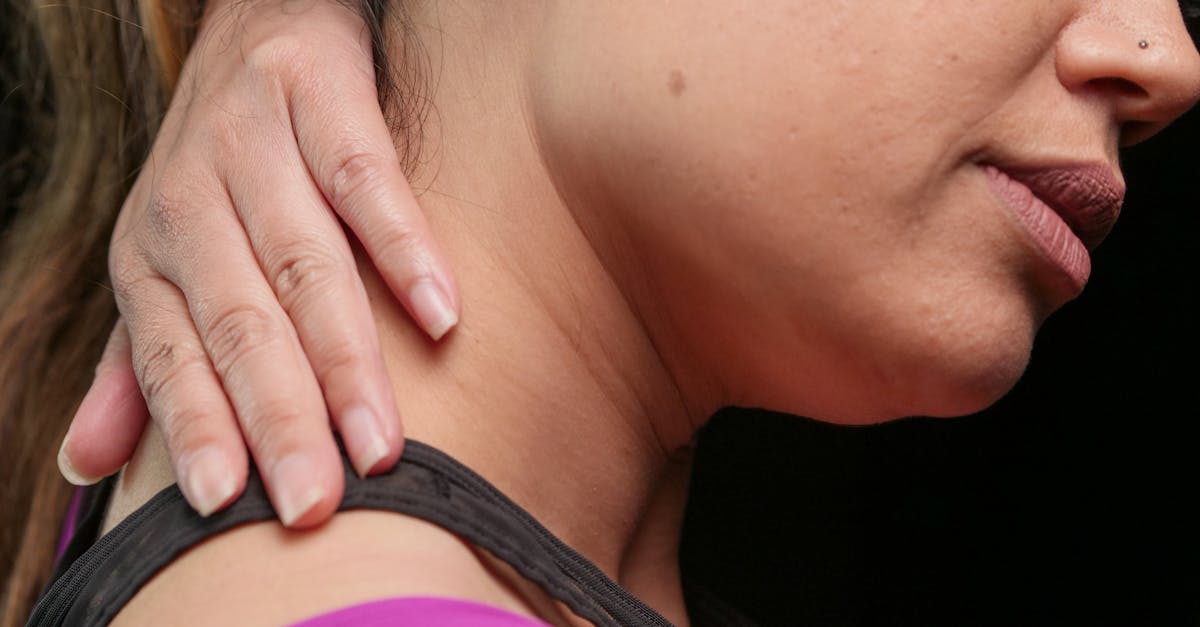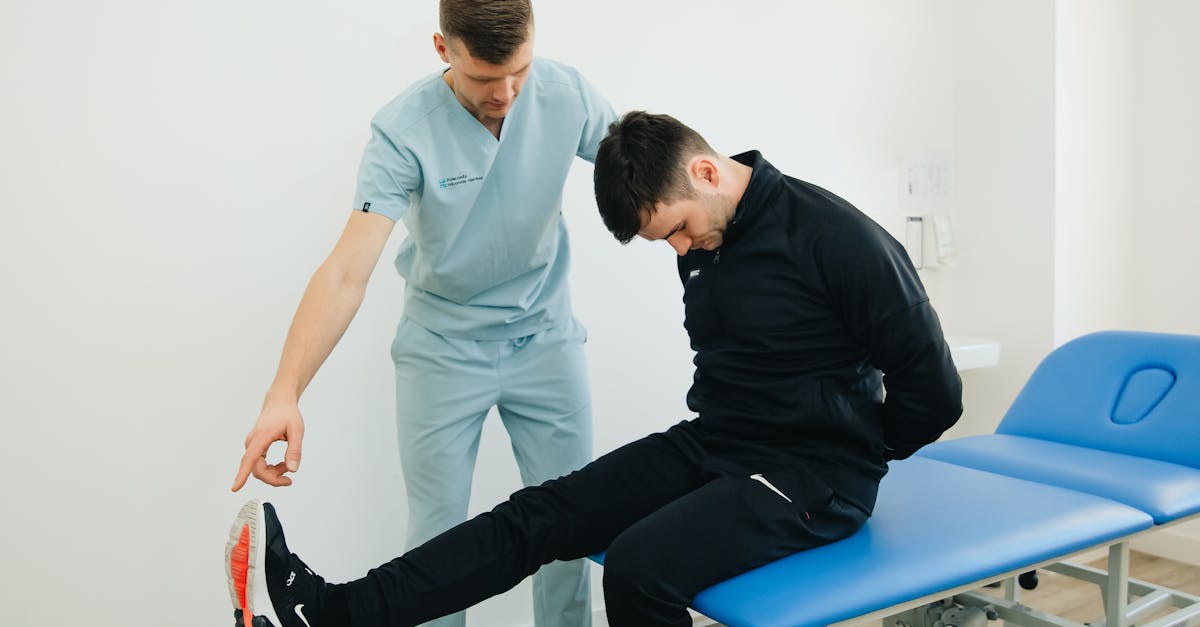|
In Short, Pains posture related: approaches global integrative encompasses a comprehensive method that addresses the multifaceted nature of pain linked to posture. This approach provides significant benefits for individuals suffering from various forms of discomfort, such as chronic neck and back pain. By focusing on the relationship between posture and pain, it enables targeted solutions that not only alleviate symptoms but also promote long-term health. Integrating various therapeutic techniques, the methodology effectively enhances alignment and mobility, ultimately leading to improved quality of life. This holistic treatment ensures individuals can experience lasting relief while embracing a proactive approach to their health. |
The relationship between posture and various types of pain, such as neck and back pain, is a complex one that necessitates a global integrative approach. This approach considers the entire body and emphasizes the importance of self-care, including an anti-inflammatory diet and manual therapies. Techniques like acupuncture, chiropractic adjustments, and biofeedback have shown effectiveness in alleviating discomfort. Furthermore, the Global Postural Reeducation method seeks to address hidden muscle imbalances, providing a holistic solution to chronic postural-related pain.

Welcome to Pulse Align: A Gentle Approach to Posture Recalibration
At Pulse Align, we are dedicated to fostering well-being through innovative, non-invasive techniques that promote the body’s natural ability to restore balance and posture. By utilizing gentle, imperceptible pulses, our approach nurtures muscle tone symmetry and supports functional rebalancing, which can help relieve tension and enhance overall comfort.
Restoring Balance to Your Body
Our philosophy at Pulse Align centers around the belief that the body has an innate ability to recalibrate itself. Rather than focusing on specific discomforts or conditions, we facilitate an environment where clients can experience improved comfort and posture as a natural byproduct of enhanced muscle tone symmetry. Our method emphasizes gentle stimulation, which encourages efficient movement and alignment, leading to an overall sense of well-being.
Personalized Experience for Every Client
Clients at Pulse Align often share positive transformations in their journey towards improved wellness, including notable improvements in neck tension, back alignment, and a more balanced posture. Our personalized approach ensures that each individual’s needs are met, reinforcing the efficacy of our gentle methods and further promoting optimal function. Whether it’s commonly experienced discomfort or an imbalance, our clients appreciate how our guidance aligns with their wellness goals.
Visit Us Today!
We invite you to discover the restorative benefits of Pulse Align for you and your loved ones. Our services are designed for everyone, from children to expectant mothers, making it a perfect family-friendly option for overall wellness. Explore our clinics located in cities like La Prairie, Mont-Royal, and Terrebonne. Learn more about this safe and gentle approach and book an appointment today to experience how Pulse Align complements your wellness journey, working in harmony with your existing healthcare support.
Medical Disclaimer
The services provided by Pulse Align are complementary to healthcare and do not replace medical care. Clients are encouraged to remain under the supervision of their healthcare team for any medical considerations. Any relief experienced is attributed to the body’s natural ability to restore balance.
Posture-Related Pain: Global Integrative Approaches
- Global Postural Reeducation: Focus on comprehensive alignment restoration.
- Anti-Inflammatory Diet: Incorporating foods that reduce inflammation.
- Manual Therapies: Including techniques like massage and chiropractic adjustments.
- Movement Education: Teaching body awareness and alignment improvements.
- Acupuncture: Using needles to alleviate pain and restore balance.
- Functional Rehabilitation: Targeting specific muscle groups related to pain.
- Self-Care Strategies: Encouraging proactive individual pain management.
- Neuromodulation: Exploring non-invasive methods for pain reduction.
- Holistic Approaches: Combining various modalities for effective treatment.
- Innovative Technologies: Utilizing advanced tools for achieving better posture.

Global Integrative Approaches to Posture-Related Pain
Posture-related pain is an increasingly common issue affecting many individuals. This article explores various global integrative approaches designed to address the underlying causes of pain associated with poor posture. By focusing on comprehensive strategies that incorporate multiple disciplines, we aim to shed light on effective methods for relieving discomfort, enhancing spinal health, and fostering overall well-being.
Understanding Posture-Related Pain
Posture-related pain is not merely a consequence of being seated or standing incorrectly; it often arises from muscular imbalances and the body’s attempt to compensate for them. A holistic understanding of how our body functions is crucial in addressing these issues. Integrative approaches recognize that pain is a complex interplay of various factors, including physical alignment, muscular tension, and psychological stress.
Global Postural Reeducation
One of the most recognized methodologies is Global Postural Reeducation (GPR). This approach aims to improve body alignment by focusing on the body as a whole rather than isolated regions. GPR emphasizes the connection between various muscle groups, teaching individuals to understand their posture’s implications and make conscious adjustments. Evidence suggests that GPR can significantly reduce the discomfort associated with poor posture, particularly in conditions like chronic neck pain and lower back pain.
Integrative Health Strategies
Utilizing an integrative health approach is also essential for managing posture-related pain. This can include dietary adjustments, such as adopting an anti-inflammatory diet, which plays a vital role in reducing overall body inflammation. Additionally, incorporating manual therapies like chiropractic care, massage, and acupuncture can provide significant relief. These therapies contribute to better muscle function and improved alignment, ultimately supporting the body’s self-healing capabilities.
Addressing Chronic Pain Through Functional Exercises
Functional exercises target specific muscle groups that contribute to posture-related pain. For instance, understanding the intricate roles of different muscles impacting the lower back and pelvis allows individuals to strengthen those areas effectively. A systematic exercise regimen that includes flexibility and strengthening routines can help restore balance and prevent injury.
Holistic Pain Management Solutions
The challenge of managing pain is often met with diverse strategies. Techniques such as biofeedback, neuromodulation, and electrical nerve stimulation offer innovative solutions for pain relief. These methods aim to recalibrate the brain’s response to pain and improve its overall efficiency in managing discomfort.
Collaborative Approaches to Care
A collaborative approach involving healthcare professionals from different disciplines reinforces the effectiveness of treatment plans. By working together, practitioners can create a comprehensive strategy that meets the unique needs of each individual, facilitating an environment where effective recovery is prioritized.
Encouraging a Mindful Connection with the Body
Finally, fostering a mindful connection with one’s body is vital. Practices such as yoga and meditation encourage individuals to develop body awareness, which can significantly enhance posture and mitigate pain. These techniques promote relaxation while also reinforcing the principles of alignment, creating a powerful synergy that supports long-term health.
Pains Posture Related: Approaches Global Integrative
| Approach | Description |
| Global Postural Reeducation | Focuses on improving overall alignment through holistic movements, promoting wellness and balance in daily activities. |
| Integrative Health Techniques | Emphasizes proactive self-care practices including lifestyle adjustments for natural body recalibration. |
| Manual Therapies | Includes approaches like massage and chiropractic care that enhance body awareness and postural balance. |
| Functional Movement Training | Encourages functional exercises to strengthen muscles while promoting equilibrium and alignment. |
| Mindfulness Practices | Teaches awareness techniques that improve posture and reduce tension through mental and physical harmonization. |
| Holistic Nutrition | Adequate dietary choices support overall wellness, impacting physical performance and alignment. |
| Self-Assessment Tools | Encourages individuals to monitor their own posture, fostering responsibility for body balance. |
| Movement Variability | Promotes various movement patterns to maintain joint health and prevent discomfort, enabling dynamic wellness. |
| Alternative Therapies | Utilizes practices like acupuncture or biofeedback to enhance bodily awareness, supporting natural recalibration. |
| Community Support | Builds connections for shared experiences and strategies, enhancing motivation for maintaining postural health. |

Client Testimonials: A Transformative Journey to Wellness
Many clients have embraced the global integrative approaches offered by Pulse Align, sharing remarkable stories of their healing journeys. One satisfied client from Mont-Royal commented on how the program helped them regain their sense of balance and well-being: “I experienced natural improvements in my posture and overall health. The supportive environment at Pulse Align empowered me to trust my body’s ability to recalibrate.”
Residents of Châteauguay have also praised the unique processes at Pulse Align. A local client stated, “The moment I walked into Pulse Align, I felt welcomed. The team guided me through personalized sessions that made a huge difference in my chronic pain. I can finally say goodbye to discomfort and hello to a vibrant, active life.”
In Saint-Jérôme, clients have found solace in the holistic recovery provided by Pulse Align’s integrative techniques. One client shared, “I was skeptical at first, but after experiencing the global postural reeducation sessions, I felt a profound change. My neck pain significantly diminished, and I felt more aligned and energetic.” This sentiment is echoed across many of our wellness journeys.
Additionally, individuals from Chicoutimi have reported similar experiences, emphasizing the supportive nature of the staff and the effectiveness of the methods used. A local resident expressed, “Thanks to Pulse Align, I learned effective strategies for maintaining my posture and have embraced a new lifestyle. I never thought I could feel this good again!”
Pulse Align’s integrative methods resonate with clients in Terrebonne as well. One individual noted, “I always believed my pain was a result of aging; however, the approach at Pulse Align helped me see that it was largely due to my posture. With their guidance, I’ve regained not just my posture but also my confidence and quality of life.”
As clients from areas like Deux-Montagnes or Sainte-Marie continue their healing journeys, more and more people are discovering how the dedicated team at Pulse Align collaborates with healthcare professionals to enhance wellness and support families. With personalized attention and evidence-based techniques, they stand ready to assist individuals seeking to improve their body function and embrace a pain-free existence.
If you’re located in the vicinity of Les Escoumins or Panama City and are looking for a pathway towards wellness, consider exploring the approaches at Pulse Align. To locate a clinic near you, visit our Our Clinics page. Join the many who have shared their success stories and experienced the supportive environment where your health can truly flourish.
Global Integrative Approaches to Posture-Related Pains
Pain related to posture is an increasingly prevalent issue in today’s fast-paced, technology-driven society. As individuals spend hours sitting at desks or looking down at screens, they often experience a myriad of discomforts and chronic pain syndromes. Among the experts leading the charge in addressing these challenges is Dr. Sylvain Desforges, a multidisciplinary specialist in fields such as osteopathy, naturopathy, and manual medicine. He is the founding president of TAGMED clinics and the ACMA association, both of which emphasize innovative healthcare solutions, including the effective management of posture-related pain.
Dr. Desforges approaches pain management through a holistic lens, recognizing that effective treatment requires more than just surface-level remedies. His methodology integrates global postural reeducation, which examines the underlying patterns of movement and alignment that contribute to discomfort. By addressing the whole person rather than isolated symptoms, Dr. Desforges promotes health through understanding the interconnectedness of muscles, joints, and the nervous system.
One key aspect of his practice is the incorporation of advanced technologies designed to enhance healing efficacy. Techniques like spinal decompression, laser therapy, and shockwave therapy are used to alleviate pain and promote recovery. These technologies work to target specific areas of discomfort while also considering the broader implications of posture on an individual’s overall health. Dr. Desforges is committed to ensuring that all treatments are evidence-based, relying on up-to-date research and clinical findings to optimize patient care.
In his clinics located in Montréal, Terrebonne, and Mont-Royal, Dr. Desforges offers a tailored approach to managing chronic pain. Each treatment plan is customized to meet the unique needs of the patient, incorporating education about posture and self-care strategies alongside therapeutic interventions. Integrative health principles promote not only physical adjustments but also encourage patients to adopt healthier lifestyle habits. This might include nutritional counseling based on anti-inflammatory diets and recommendations for regular physical activity, both of which can significantly impact posture and pain levels.
Through the ACMA association, Dr. Desforges advocates for a collaborative approach to pain management involving various healthcare practitioners. By fostering communication and cooperation between different disciplines, he believes that comprehensive care can be delivered more effectively. This alignment of services ensures that patients receive well-rounded support, paving the way for improved health outcomes.
Moreover, his emphasis on addressing gaps in pain research highlights the importance of an evidence-based framework in the treatment of musculoskeletal issues. As more research surfaces, the understanding of how chronic pain connects with posture deepens, enabling better treatment options. Dr. Desforges’s passionate pursuit of knowledge and innovative therapies underscores his role as a leader in the field of integrative health.
Ultimately, the efforts led by Dr. Sylvain Desforges and his clinics aim to empower individuals to reclaim their health. By providing actionable insights and advanced treatment techniques focused on posture-related pains, patients are given the tools they need to live comfortably and actively. The integration of holistic and modern medicine bridges the gap between conventional approaches and innovative therapies, advancing the quality of care available in the realm of posture and pain management.
Neurovertebral Decompression Technology by TAGMED: A Breakthrough in Pain Management
Mécanisme d’action
The neurovertebral decompression technology offered by TAGMED operates through the application of controlled, progressive traction force on the spinal column. This method creates an increased space between the vertebrae, effectively alleviating the pressure on intervertebral discs and nerve roots. As this space expands, it facilitates better fluid circulation in the targeted area, which is crucial for promoting healing. By reducing inflammation and relieving pain, TAGMED’s approach enables patients to experience significant improvements in their condition. A thorough understanding of this mechanism reinforces how neurovertebral decompression can be a pivotal component in managing chronic pain associated with conditions such as disc herniation, disc bulging, and moderate to severe spinal or foraminal stenosis.
Avantages spécifiques
One of the most remarkable aspects of TAGMED’s neurovertebral decompression is its non-invasive nature, making it an effective solution for relieving chronic pain and symptoms related to the aforementioned conditions. By decreasing the pressure exerted on nerve structures, this therapeutic technique optimizes the circulation of fluids around the discs, thereby promoting a quicker healing process. Patients often rejoice in enhanced quality of life, as the treatment can diminish the reliance on pharmacological interventions while allowing them to return to their daily activities with reduced discomfort and improved mobility.
Comparaison avec d’autres traitements
When juxtaposed with other therapeutic approaches commonly exercised in managing pain-related afflictions, TAGMED’s neurovertebral decompression presents numerous advantages. Unlike traditional methods such as analgesics, corticosteroid injections, invasive surgeries, or conventional physiotherapy, neurovertebral decompression avoids invasive procedures and minimizes the associated risks of medication side effects. Many patients find that recovery through this method is often quicker, allowing them to return to typical life routines at a much faster pace. This treatment not only focuses on pain relief but also addresses the underlying structural issues through enhanced spinal decompression.
Études de cas ou témoignages
Numerous success stories exist regarding patients who have embraced TAGMED’s neurovertebral decompression to combat their chronic pain and associated symptoms. For instance, one patient who suffered from a herniated disc reported a long-lasting reduction in pain levels after several sessions of decompression treatment. This patient achieved a significant functional improvement, returning to essential daily tasks and enjoying an overall increased sense of well-being. Another testimonial highlights a patient with spinal stenosis who experienced an expedited recovery and reduced pharmacological dependency, showcasing the effective outcomes of neurovertebral decompression. These real-life examples illustrate the tangible benefits of this innovative treatment, supporting the notion that it is a valuable approach to managing chronic pain and enhancing patients’ lives.
Pain Related to Posture: Global Integrative Approaches
Pain related to posture has increasingly come to the forefront of health discussions, emphasizing the need for global integrative approaches to address such issues. This perspective recognizes that discomfort often transcends mere symptoms; it is a call to understand and treat the underlying causes. Whether it’s chronic neck pain or persistent lower back discomfort, the complexities of the musculoskeletal system require comprehensive attention.
One key aspect of these integrative approaches is the emphasis on holistic practices. Techniques such as manual therapy, acupuncture, and chiropractic adjustments have shown promise in alleviating pain. These methods, when combined with a proactive self-care regimen that may include an anti-inflammatory diet and exercise, can enhance recovery and improve overall well-being. Incorporating such variabilities is essential since pain doesn’t often stem from a singular source but can involve multiple interrelated factors.
The innovative practice of Global Postural Reeducation (GPR) serves as a significant example of an integrative approach. GPR seeks to realign the body through a series of tailored exercises that focus on overall postural correction, potentially offering sustainable relief from posture-related pain. The application of such comprehensive methods highlights the necessity of understanding the intricate relationship between posture and well-being.
Moreover, emerging research in areas such as neuromodulation and the role of muscle groups in managing pain is shedding light on modern solutions. Such advancements underscore the importance of ongoing research and development in treating posture-related ailments, aiming to close the gaps in traditional pain management that often overlooks the interconnected nature of bodily systems.

Do you suffer from a chronic condition that responds little or not at all to conservative treatments?
At Pulse Align, we understand the desire for effective, non-invasive solutions to improve overall well-being. Our innovative approach utilizes gentle, imperceptible pulses that help to restore the body’s natural balance and posture. This method promotes a recalibration of muscle tone, which can lead to reduced tension and discomfort in the body. By fostering an environment where the body can thrive without invasive procedures, we invite you to explore an alternative route to wellness that harmonizes with your lifestyle.
It’s important to note that at Pulse Align, our focus is not on pain or specific conditions, but rather on enabling the body to recalibrate itself. Our gentle methodologies can often yield incredible improvements, offering our clients enhanced comfort and better posture. By supporting the body’s innate ability to adapt and realign, we find many of our clients experience a newfound sense of stability and ease, which naturally contributes to their wellness journey.
Our personalized approach is at the heart of what we do. Many clients have shared their positive experiences, reporting notable enhancements in reducing tension, especially in the neck and back areas. These accounts reflect significant shifts not only in their posture, but in overall wellness, as they feel less discomfort throughout their day-to-day activities. The connections formed during sessions lead to a tailored experience that resonates deeply with our clients’ individual needs. From families seeking wellness together to mothers-to-be aiming for a smoother transition into motherhood, our services cater to all.
We invite you to discover more about Pulse Align and how we can support your wellness journey. By visiting our website, you can explore nearby locations such as La Prairie, Mont-Royal, Terrebonne, and more, as well as book consultations for yourself or your family members. Remember, Pulse Align serves as a complement to your existing healthcare services, focusing on enhancing your body’s natural responses and promoting balance.
To learn more about our services and book an appointment, visit our website: Pulse Align. Our safe, non-invasive, and family-friendly approach ensures that everyone, including children and pregnant women, can enjoy a bespoke experience dedicated to their individual wellness paths. Join us at Pulse Align and embark on a holistic journey toward improved neuromuscular health and restored balance.
Frequently Asked Questions
Posture Imbalance, body misalignment
- How does breathing influence posture?Proper diaphragmatic breathing supports the trunk and improves alignment, while shallow breathing can increase tension.
- What are common signs of body misalignment?Uneven shoulders, a tilted pelvis, abnormal spinal curvature, or a head leaning forward may indicate misalignment.
- Can poor posture cause jaw pain?Yes, improper head and neck alignment may create tension in the jaw, leading to pain or TMJ issues.
- Are older adults more prone to misalignment?With age, bone density loss, reduced muscle mass, and inactivity can lead to increased postural problems.
- How do I maintain achieved progress?Continue exercising, stay attentive to daily posture, and have regular check-ups with a professional.
- Are massages helpful for improving body alignment?Massage can relax tense muscles, improve circulation, and facilitate postural adjustments, especially combined with targeted exercises.
- Can a mirror help correct my posture?Yes, observing yourself in a mirror helps identify asymmetries and adjust your position in real-time.
- Can postural imbalance cause fatigue?Yes, maintaining poor posture requires more muscular effort, leading to increased fatigue throughout the day.
- Are proprioception exercises useful?Yes, they help improve body awareness, balance, and coordination, which promote better posture.
- How can I adapt my workstation to improve posture?Adjust chair height, position the screen at eye level, use a footrest, and ensure forearms are parallel to the floor.
Victor Guillot knows that life’s pains can often be traced back to the way we sit, stand, and move. As a Posture Awareness Advocate at Pulse Align, he’s committed to showing readers how small adjustments in alignment can bring big relief. With a blend of empathy and evidence-based research, Victor translates the science of posture into practical steps that help ease discomfort, protect against injury, and restore natural balance. He believes that everyone deserves to feel strong, stable, and pain-free—and through his writing, he offers the guidance and encouragement to help readers reach that goal.
Medical Disclaimer
The information and advice provided on this site do not replace the advice, diagnosis, or treatment of a healthcare professional. Please note that the author of this article is neither a doctor nor a specialist in a medical specialty as defined by the Collège des médecins du Québec. Manual medicine, functional medicine, and sports medicine as described on this site exclude any medical treatment or diagnosis made by a doctor or medical specialist. Always consult your doctor for any medical questions. For more details, please read our complete Legal Notice.
References
- Xu, Z.-H., An, N., & Wang, Z.-R. (2022). Exercise-induced hypoalgesia following proprioceptive neuromuscular facilitation and resistance training among individuals with shoulder myofascial pain: Randomized controlled trial. JMIRx Med, 3(4), e40747. https://xmed.jmir.org/2022/4/e40747/
- Hagberg, M., Harms-Ringdahl, K., Nisell, R., & Hjelm, E. W. (2000). Rehabilitation of neck-shoulder pain in women industrial workers: a randomized trial comparing isometric shoulder endurance training with isometric shoulder strength training. Archives of Physical Medicine and Rehabilitation, 81(8), 1051–1058. https://www.sciencedirect.com/science/article/pii/S000399930090409X
- Lin, P., Yang, M., Huang, D., Lin, H., Wang, J., Zhong, C., & Guan, L. (2022). Effect of proprioceptive neuromuscular facilitation technique on the treatment of frozen shoulder: a pilot randomized controlled trial. BMC Musculoskeletal Disorders, 23(1), 367. https://doi.org/10.1186/s12891-022-05327-4
- Pillastrini, P., Rocchi, G., Deserri, D., Foschi, P., Mardegan, M., Naldi, M. T., Villafañe, J. H., & Bertozzi, L. (2016). Effectiveness of neuromuscular taping on painful hemiplegic shoulder: a randomised clinical trial. Disability and Rehabilitation, 38(16), 1603–1609. https://doi.org/10.3109/09638288.2015.1107631
- Patsaki, I., Gerovasili, V., Sidiras, G., Karatzanos, E., Mitsiou, G., Papadopoulos, E., Christakou, A., Routsi, C., Kotanidou, A., & Nanas, S. (2017). Effect of neuromuscular stimulation and individualized rehabilitation on muscle strength in intensive care unit survivors: a randomized trial. Journal of Critical Care, 40, 76–82. https://www.sciencedirect.com/science/article/pii/S0883944116304002
- Moroder, P., Karpinski, K., Akgün, D., Danzinger, V., Gerhardt, C., Patzer, T., Tauber, M., Wellmann, M., Scheibel, M., & Boileau, P. (2024). Neuromuscular Electrical Stimulation–Enhanced Physical Therapist Intervention for Functional Posterior Shoulder Instability (Type B1): A Multicenter Randomized Controlled Trial. Physical Therapy, 104(1), pzad145. https://academic.oup.com/ptj/article-abstract/104/1/pzad145/7327094
- Seitz, A. L., Podlecki, L. A., Melton, E. R., & Uhl, T. L. (2019). Neuromuscular adaptions following a daily strengthening exercise in individuals with rotator cuff related shoulder pain: a pilot case-control study. International Journal of Sports Physical Therapy, 14(1), 74. https://www.ncbi.nlm.nih.gov/pmc/articles/PMC6350670/
- İğrek, S., & Çolak, T. K. (2022). Comparison of the effectiveness of proprioceptive neuromuscular facilitation exercises and shoulder mobilization patients with Subacromial Impingement Syndrome: A randomized clinical trial. Journal of Bodywork and Movement Therapies, 30, 42–52. https://www.sciencedirect.com/science/article/pii/S1360859221002564
- Kim, M.-S., Kim, S. H., Noh, S.-E., Bang, H. J., & Lee, K.-M. (2019). Robotic-assisted shoulder rehabilitation therapy effectively improved poststroke hemiplegic shoulder pain: a randomized controlled trial. Archives of Physical Medicine and Rehabilitation, 100(6), 1015–1022. https://www.sciencedirect.com/science/article/pii/S0003999319301601
- Lee, J.-H., Chun, Y.-M., Kim, D.-S., Lee, D.-H., & Shin, S.-J. (2022). Effects of neuromuscular electrical muscle stimulation on the deltoid for shoulder function restoration after reverse total shoulder arthroplasty in the early recovery period: a prospective randomized study. Archives of Orthopaedic and Trauma Surgery, 143(6), 3037–3046. https://doi.org/10.1007/s00402-022-04515-0




